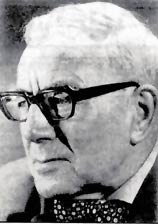In the furor surrounding 9/11 and the new "war on terror," we tend to forget that there are and have been terrorist movements in the United States comprised of Americans attacking Americans. We need only to look back to Timothy McVeigh in 1995 to see that not all terrorists are foreigners, or are trained or equipped by international terror networks.
In terrorism studies, this terrorism is often called "nuisance terrorism," a term that I think downplays the violent crimes of these individuals. Their groups are mysterious, their aims are unreasonable and their actions violent for its own sake. They are idealistic and driven often by percieved repression or injustice.
PBS has again produced a wonderful program about a historical event that has considerable currency to goings-on today. It revolved around Patty Hearst and the Symbionese Liberation Army in the 1970's.
Movements like the SLA seem to be based around almost unattainable goals of ideological significance. Different from other movements of the time, the SLA was organized and dedicated to violent action against government and industry, thus the kidnapping of Patty Hearst. That dimension is an interesting one that leaves some intriguing questions: Was Patty Hearst brainwashed or did she eventually join willingly? Was this a classic case of the Stockholm Syndrome? Were the SLA violent opportunists, revolutionaries, terrorists? Did Patty Hearst play their game as some sick extended youthful rebellion? What part did her father play in getting her sentence commuted in 1979, if any?
These domestic terrorists, are they an extension of America's revolutionary birth or an indication of their own times and the fears and uncertainties that plague all times (more acutely, it seemed, in 1970's America)? Clearly, the SLA had a political agenda and propaganda to back it up. It did not, however, seem to participate in mass recruitment or outreach to the disaffected youth of the time. Did they see themselves as a revolutionary vanguard who would start and the people would follow? These groups are difficult to pin down apart from the violence that is involved in their actions. It is hard to generalize about them and even harder to spot patterns in their development. They span the spectrum from groups like the SLA to the militia movements. There is not much that they could agree on. So, what are they?
They appear at the fringes of American life with visions of a world they wish to bring back or create anew. They seem to reflect the most extreme form of dissolutionment with the lumbering oaf that is the American system. They are a reaction to this sort of sociopolitical torpor that emerges in all eras of history. They are in somewhat the same camp as protestors/activists but with one central difference. That is the question of means. Violence vs. peaceful protest. I think that this is the issue that is at the center of the problem. It all has to do with methods. When you put down the picket sign and the petition and pick up a gun, you are crossing the line.
Does that line need to be crossed in certain situations? Remember the Declaration of Independence calls people to replace the government if it is not serving the people. This is a rather weak legal precedent because the Declaration of Independence is not the law of the land. I agree that pressure and outrage are central pillars in the structure of protest, pillars that are necessary to the people being heard when they feel that they are voiceless. Violence, however, especially against innocent people is never justified. Ever.
Protest and anger at the powers-that-be are a cornerstone of American culture. It also seems that violence is a critical factor in the American psyche. When the two collide, history is made, the message is passed but people die for no good reason. We must continue a national dialogue of culture, to see where these two factors fit in our lives. If we do not, violence can be just around the corner.
Dialogue is certainly preferable to death.
Do Not Worry
6 years ago

No comments:
Post a Comment